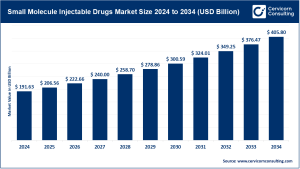Market Overview
The global telehealth 2.0 market marks a major shift in digital healthcare, moving past basic video consultations toward fully integrated, AI-driven, and wearable-enabled care ecosystems. In 2024, the market stood at USD 161.58 billion and is projected to soar to USD 792.52 billion by 2034, expanding at a robust CAGR of 17.24% during the forecast period.
Growth in this sector is primarily supported by the increasing burden of chronic illnesses, an aging global population, shortages in medical professionals, and the rising demand for convenient, tech-enabled healthcare delivery. Telehealth 2.0 combines AI, IoT, cloud infrastructure, and remote monitoring to optimize care, improve clinical outcomes, and increase efficiency. Government-led initiatives and significant investments in digital health infrastructure are further accelerating adoption.
👉 Get a Free Sample: Click here
Key Market Trends
The evolution of the Telehealth 2.0 market is being shaped by a mix of technological, regulatory, and consumer-driven forces:
-
AI-Enhanced Virtual Care
Platforms now incorporate AI for diagnostics, triaging, and real-time health monitoring. In 2025, many U.S. providers introduced automated triage and AI-assisted tools to improve virtual consultations, underscoring a shift toward intelligent, evidence-based care. -
Cloud-Based Telehealth Expansion
Cloud adoption continues to rise thanks to scalability, lower upfront costs, and interoperability. With hybrid care models and global collaborations growing, cloud infrastructure enables seamless data sharing and operational efficiency. -
Remote Patient Monitoring (RPM)
RPM was a standout application in 2024, representing 44.73% of revenue. Its integration with wearables and AI analytics allows for continuous condition monitoring, fewer hospitalizations, and proactive treatment interventions. -
Celebrity & Influencer Campaigns
Public figures are driving consumer confidence and awareness. For instance, in 2025, telehealth company Ro partnered with Serena Williams to promote GLP-1 weight-loss programs, signaling how lifestyle medicine is converging with digital health. -
Hybrid Care Models
Providers are blending virtual-first pathways with in-person care, reducing wait times, boosting preventive care adherence, and enhancing lifetime patient engagement.
Market Drivers
-
Policy Support & Reimbursement
Government action remains critical. In March 2025, the U.S. expanded Medicare telehealth coverage under H.R.1968, giving 45 million seniors access to virtual care. Policies like these improve affordability and accessibility. -
Technological Innovation
The convergence of AI, IoT, cloud, and remote monitoring systems is enabling continuous care, better diagnostic accuracy, and streamlined workflows. -
Consumer Demand for Accessibility
Patients increasingly seek personalized, hybrid, and digital-first solutions that reduce hospital reliance—especially important in underserved regions. -
Digital Health Investments
Ongoing funding from both public and private stakeholders in telehealth platforms, AI analytics, and cloud solutions is strengthening scalability and care delivery. -
Chronic Disease & Aging Demographics
Rising cases of chronic conditions coupled with aging populations are fueling demand for RPM and other remote solutions, making Telehealth 2.0 central to value-based care.
Impact of Trends and Drivers
-
By Component: AI-powered platforms captured 43.25% of revenue in 2024, showcasing demand for integrated ecosystems.
-
By Delivery Mode: Cloud-based models led with 39.84% share, reflecting hybrid adoption and global collaboration.
-
By Application: RPM dominated with 44.73% revenue, emphasizing chronic care management.
-
By End User: Hospitals & clinics contributed 40.18% share, largely due to investments in EMRs and virtual care solutions.
-
Regional View: North America leads in adoption, while Asia-Pacific is the fastest-growing region, supported by large-scale telemedicine initiatives in India and Southeast Asia.
Challenges & Opportunities
-
Challenges
-
Regulatory inconsistencies and licensing hurdles restrict international delivery.
-
Cybersecurity and data privacy remain top concerns.
-
-
Opportunities
-
Expanding into emerging markets such as Asia-Pacific and Latin America.
-
Leveraging AI-driven analytics and wearables to unlock new revenue streams.
-
Hybrid care strategies to strengthen patient engagement and preventive care adoption.
-
Future Outlook
Looking ahead, the Telehealth 2.0 market is poised for rapid growth, with the value expected to hit USD 792.52 billion by 2034, at a steady 17.24% CAGR. Key growth drivers will include AI-powered diagnostics, cloud-enabled platforms, RPM, hybrid care models, and chronic disease-focused digital solutions. With strong policy support, rising investment, and growing consumer appetite for personalized healthcare, Telehealth 2.0 is set to become an integral part of global healthcare ecosystems.

